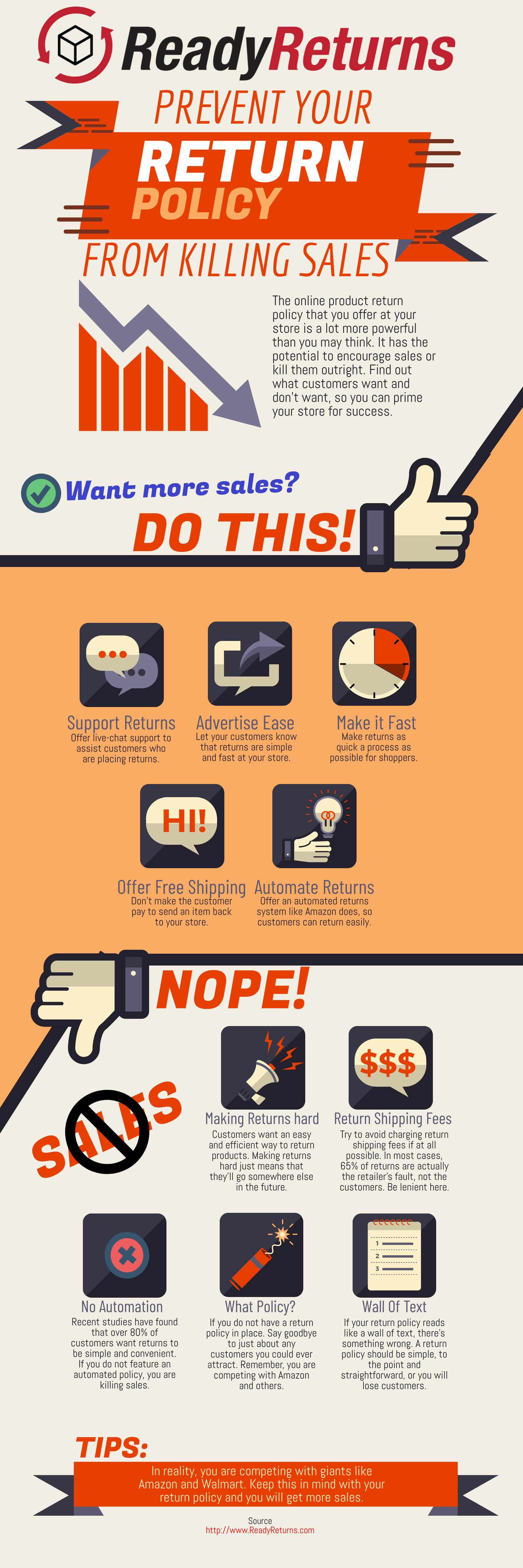The Significance of National Returns Day for Ecommerce in 2024

Although ecommerce returns are a year-round reality, one day rules them all. National Returns Day, first declared by UPS in 2017, refers to the most popular day for customers returning online purchases and typically falls during the first week of January.
Recent years have seen this day stretch into a full week of return shipments, so e-tailers should prepare accordingly. Improving website speeds, checkout processes and other ecommerce conversion tactics will create a top notch customer experience and supercharge your bottom line.
Yes, it’s true — National Returns Day 2024 and the rest of returns week can be a huge opportunity for your online store. Being cognizant of critical dates such as National Returns Day can be a game-changer for online businesses. The start of the new year is not just about resolutions—it also marks the busiest returns day for the retail industry.
Take a look at these statistics on ecommerce returns to prove it, and keep reading for all the other facts you need to know to be prepared for this unofficial holiday.
What is National Returns Day?
In the e-commerce landscape, National Returns Day is the day when the most significant number of returns are processed by retailers after the holidays.
Why is National Returns Day Important?
Understanding the implications of National Returns Day can present unique opportunities for businesses. The ability to anticipate high volumes of returns and prepare adequately can enhance the customer experience, promote brand loyalty, and even result in increased sales.
National Returns Day 2024: What to Expect
As we approach 2024, it’s crucial for businesses to be prepared for National Returns Day. Historically, this day has fallen on the first Monday after New Year’s Day. However, recent trends point to a shift from a single peak returns day to an entire returns week.
A Deeper Look at the Statistics on National Returns Day
Insights from previous years reveal a steady increase in the number of returns during the week following New Year’s Day. UPS, a major shipping company in the US, has reported that returns have tripled in the last decade.
More than 2 billion people worldwide shop online.
Let’s set the scene with the sheer number of people who make ecommerce purchases. As of 2021, there were 2.14 billion people worldwide who buy goods and services online — a huge jump from 1.6 billion people in 2016. The pandemic and subsequent brick-and-mortar store closures sped up the expansion of ecommerce considerably, and Shopify estimates 10 years of growth happened in just 90 days. Even a couple of years later, we’re still seeing the impact.
The average ecommerce return rate is 16.6%.
It doesn’t take a mathematician to work out that more people shopping online equals more returns. The National Retail Federation reported earlier this year ecommerce returns totaled $761 billion in 2021, accounting for 16.6% of total sales. The return rate varies by category, with auto parts, apparel and home goods leading the pack. Returns also jump following the holiday season. Per the NRF, retailers expect 17.8% of purchases made in November and December to be returned.
National Returns Day 2024 might not be just one day.
The holiday season seems to arrive earlier and earlier every year, which is both a blessing and a curse for online retailers. This phenomenon, known as the “Christmas Creep,” applies not only to themed merchandise but also to shopper behavior. Consumers shop well before the holidays these days, and 57% say they plan to make purchases online. It’s no wonder that UPS forecasted a shift to National Returns Week in 2021, and trends are pointing toward seeing a returns season in 2024.
Package volume reaches 1.75 million units per day during peak returns times.
During “returns week” in 2021, logistics experts predicted a package volume of 8.75 million units mostly across five days in early January. And during this past year, UPS processed 60 million return packages between November 14 and January 22. Keep in mind, this number doesn’t include USPS, FedEx, DHL, Amazon or other popular shipping carriers. Next time you see a shipping delay, consider these carriers are processing millions of parcels every single day for months on end.
One in four Americans will make an ecommerce return during returns season.
Louisville TV station WDRB reported 25% of U.S. customers will send parcels back to e-tailers around the holidays. Whether items arrived damaged before the gift giving commenced or shoppers simply had buyer’s remorse, one-quarter of them are expected to make an ecommerce return sometime between November and January.
The Rising Trend of “Bracketing”
A significant factor contributing to this surge in returns is the practice of “bracketing”. This consumer behavior, especially common in the fashion industry, involves customers ordering multiple sizes of an item with the intention of returning the ones that don’t fit. Ecommerce growth has made returns a more consequential factor in a consumer’s decision-making process.
Some of those returns will be attributed to bracketing.
Before the ecommerce surge, most apparel shopping was done in-store where consumers could try on different sizes and styles before handing over their credit cards. For online shoppers, however, this process is a bit more complicated. Sizing is not consistent, and colors can be difficult to ascertain on a device’s screen. So, they order multiple options with the intention of returning the ones that don’t work — known now as ecommerce bracketing.
Per Statista, these are the top reasons shoppers bracket:
- Sizing options aren’t clear (48%)
- Unable to try on options in store (36%)
- Unfamiliar with the brand (26%)
- Finding the right size after weight has changed (23%)
All in all, 40% of consumers occasionally bracket, which explains high return rates around the holidays.
More than 60% of shoppers will opt to ship their returns.
Shopping online is hugely popular, thanks to the convenience and accessibility it provides. But there’s no denying it puts a massive strain on supply chains and logistics companies, especially during busy periods. That’s why ecommerce behemoth Amazon encourages free brick-and-mortar returns to its own stores or lockers, or to a participating Kohl’s location. Other brands are following suit, but only 30% of shoppers opt for in-store returns. More than twice that prefer to ship items back to the e-tailer.
Offering hassle-free returns will win unsure shoppers over.
We’ll never stop preaching the benefits of hassle-free returns. They’re a proven way to attract and retain customers, and building an ever-expanding loyal customer base is the best thing an e-tailer can do. (After all, it’s far easier and cheaper to sell to a repeat buyer than to win over a new one.) With easy returns, shoppers are confident they can send back the products that don’t work out. And research shows a positive returns experience will encourage 92% of them to make a new purchase.
The Impact of Returns on Retailers
The unpredictability and volume of returns can pose considerable challenges for retailers. Efficient processing and reintegration of returned items into the supply chain are crucial to minimize losses.
Strategies for Managing Returns
In light of these challenges, retailers must develop effective strategies to manage returns. These may include hiring additional staff during the returns week, reviewing and updating return policies, and investing in technology to streamline the returns process.
How to Turn Returns Into Opportunities
Despite the challenges, returns can also present opportunities for businesses. Offering low shipping rates and fast delivery can significantly enhance the customer experience, leading to increased brand loyalty and repeat purchases.
Embracing the Future of E-commerce
As we look ahead to National Returns Day 2024, it’s clear that the e-commerce landscape is continuously evolving. Businesses that stay informed and adapt to these changes will be best positioned to meet their customers’ needs and achieve long-term success.
In conclusion, National Returns Day is a significant event in the e-commerce calendar. By understanding its implications and leveraging e-commerce statistics, businesses can turn the challenge of returns into an opportunity for growth.
Anything can happen.
Everything that happens on and around National Returns Day 2024 is dictated by the holiday shopping season. Here’s a quick look at trends experts have predicted based on preseason research and consumer behavior:
- 74% of shoppers plan to spend the same amount or more as last year ($1430 per consumer on gifts, travel and entertainment), despite inflation and fears of a recession.
- 65% say price is in the top three factors that influence holiday spending, down from 75% last year, but e-tailers who can still offer value deals are primed to attract these price-conscious customers.
- 25% of consumers planned to begin shopping in early November, but 41% waited until after Thanksgiving — possibly resulting in an earlier rise in ecommerce returns.
With Black Friday and Cyber Monday in the rear view, it’s time to turn your attention to the upcoming returns season and the opportunities it creates. Repeat buyers and second-chance sales are on the horizon, ensuring a healthy income stream for your online store to float it through a historically slow time of year. We wish you the best of luck on National Returns Day 2024!
Need more ecommerce returns statistics? Check out our recent guides:
➡️ These 10 Statistics on Ecommerce Returns Paint the Full Picture
➡️ 8 Post-holiday Return Facts You Need to Know
➡️ Buyer’s Remorse Can Become Your Gain! 11 Proven Tips on How to Best Handle Post-Holiday Returns

What You Should Do Now
Here are 3 ways ReadyReturns can help you deliver amazing return experiences that eliminate prepaid labels and boxes, delight customers, and protect your margins:
Schedule a Demo – See how ReadyReturns turns product returns into your competitive advantage with “Amazon-like” returns and cost-saving features.
Start Your Free Trial of ReadyReturns (No CC Required) – Set up in minutes. Instantly offer QR code returns, product exchanges, and custom return rules that turn frustrated customers into repeat buyers.
Try ReadyCloud at No Cost – Why manage shipping and returns separately? Get ReadyShipper X, ReadyReturns, and more in one unified platform for seamless fulfillment and order management.
Share On:








